Always Looking: Essays on Art 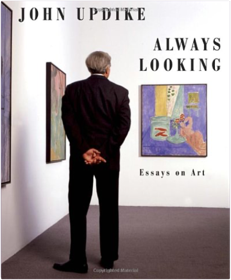 Always Looking opens with “The Clarity of Things,” the Jefferson Lecture in the Humanities for 2008. Here, in looking closely at individual works by Copley, Homer, Eakins, Norman Rockwell, and others, the author teases out what is characteristically “American” in American art. This talk is followed by fourteen essays, most of them written for The New York Review of Books, on certain highlights in Western art of the last two hundred years: the iconic portraits of Gilbert Stuart and the sublime landscapes of Frederic Edwin Church, the series paintings of Monet and the monotypes of Degas, the richly patterned canvases of Vuillard and the golden extravagances of Klimt, the cryptic triptychs of Beckmann, the personal graffiti of Miró, the verbal-visual puzzles of Magritte, and the monumental Pop of Oldenburg and Lichtenstein. The book ends with a consideration of recent works by a living American master, the steely sculptural environments of Richard Serra. John Updike was a gallery-goer of genius. Always Looking is, like everything else he wrote, an invitation to look, to see, to apprehend the visual world through the eyes of a connoisseur. Assorted Prose 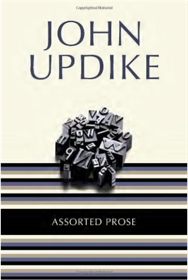 Higher Gossip: Essays and Criticism 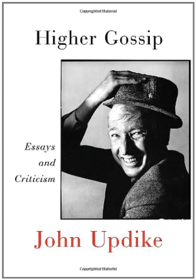 This collection of miscellaneous prose opens with a self-portrait of the writer in winter, a Prospero who, though he fears his most dazzling performances are behind him, reveals himself in every sentence to be in deep conversation with the sources of his magic. It concludes with a moving meditation on a modern world robbed of imagination—a world without religion, without art—and on the difficulties of faith in a disbelieving age. In between are previously uncollected stories and poems, a pageant of scenes from seventeenth-century Massachusetts, five late "golf dreams," and several of Updike's commentaries on his own work. At the heart of the book are his matchless reviews—of John Cheever, Ann Patchett, Toni Morrison, William Maxwell, John le Carré, and essays on Aimee Semple McPherson, Max Factor, and Albert Einstein, among others. Also included are two decades of art criticism—on Chardin, El Greco, Blake, Turner, Van Gogh, Max Ernest, and more. Updike's criticism is gossip of the highest order, delivered in an intimate and generous voice. Hugging the Shore: Essays and Criticism 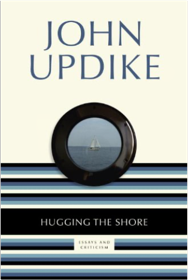 “Writing criticism is to writing fiction and poetry as hugging the shore is to sailing in the open sea,” writes John Updike in his Foreword to this collection of literary considerations. But the sailor doth protest too much: This collection begins somewhere near deep water, with a flotilla of short fiction, humor pieces, and personal essays, and even the least of the reviews here—those that “come about and draw even closer to the land with another nine-point quotation”—are distinguished by a novelist’s style, insight, and accuracy, not just surface sparkle. Indeed, as James Atlas commented, the most substantial critical articles, on Melville, Hawthorne, and Whitman, go out as far as Updike’s fiction: They are “the sort of ambitious scholarly reappraisal not seen in this country since the death of Edmund Wilson.” With Hugging the Shore, Michiko Kakutani wrote, Updike established himself “as a major and enduring critical voice; indeed, as the pre-eminent critic of his generation.” In the Beauty of the Lilies 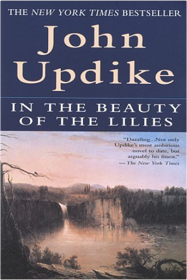 John Updike: Novels 1959-1965 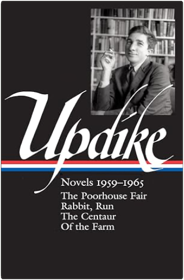 John Updike: Novels 1968-1975 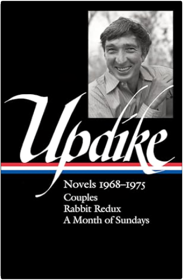 John Updike: Novels 1978-1984 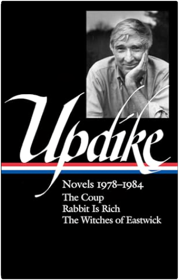 John Updike: Novels 1986–1990 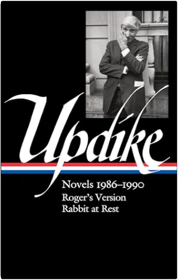 John Updike: Novels 1996–2000 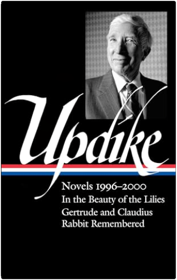 John Updike: The Collected Stories 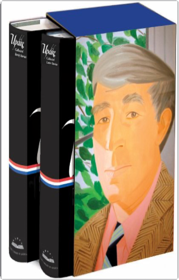 Here, in two career-spanning volumes, are 186 unforgettable stories, from Ace in the Hole” (1953), a sketch of a Rabbit-like ex-basketball player written when Updike was a Harvard senior, to The Full Glass” (2008), the author’s toast to the visible world, his own impending disappearance from it be damned.” Based on new archival research, each story is presented in its final definitive form and in order of composition, established here for the first time. This unprecedented collection of American masterpieces is not just the publishing event of the season, it is a national literary treasure. The Maples Stories 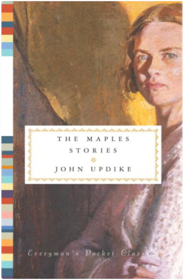 Collected together for the first time in hardcover, these eighteen classic stories from across John Updike’s career form a luminous chronicle of the life and times of one marriage in all its rich emotional complexity. In 1956, Updike published a story, “Snowing in Greenwich Village,” about a young couple, Joan and Richard Maple, at the beginning of their marriage. Over the next two decades, he returned to these characters again and again, tracing their years together raising children, finding moments of intermittent happiness, and facing the heartbreak of infidelity and estrangement. Seventeen Maples stories were collected in 1979 in a paperback edition titled Too Far to Go, prompted by a television adaptation. Now those stories appear in hardcover for the first time, with the addition of a later story, “Grandparenting,” which returns us to the Maples’s lives long after their wrenching divorce. My Father's Tears and Other Stories 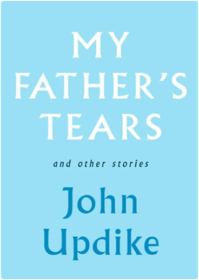 “Personal Archaeology” considers life as a sequence of half-buried layers, and “The Full Glass” distills a lifetime’s happiness into one brimming moment of an old man’s bedtime routine. High-school class reunions, in “The Walk with Elizanne” and “The Road Home,” restore their hero to youth’s commonwealth where, as the narrator of the title story confides, “the self I value is stored, however infrequently I check on its condition.” Exotic locales encountered in the journeys of adulthood include Morocco, Florida, Spain, Italy, and India. The territory of childhood, with its fundamental, formative mysteries, is explored in “The Guardians,” “The Laughter of the Gods,” and “Kinderszenen.” Love’s fumblings among the bourgeoisie yield the tart comedy of “Free,” “Delicate Wives,” “The Apparition,” and “Outage.” In sum, American experience from the Depression to the aftermath of 9/11 finds reflection in these glittering pieces of observation, remembrance, and imagination. Olinger Stories 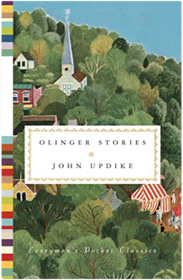 Rabbit Angstrom : The Four Novels : Rabbit, Run, Rabbit Redux, Rabbit Is Rich, Rabbit at Rest 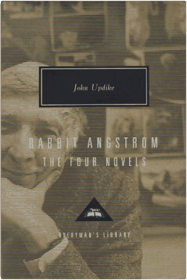 Seek My Face: A Novel 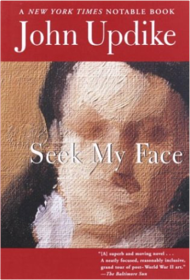 Self-Consciousness: Memoirs 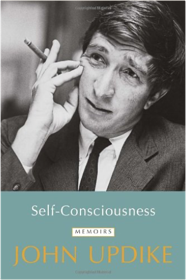 Still Looking: Essays on American Art 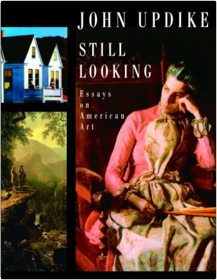 After beginning with early American portraits, landscapes, and the transatlantic career of John Singleton Copley, Still Looking then considers the curious case of Martin Johnson Heade and extols two late-nineteenth-century masters, Winslow Homer and Thomas Eakins. Next, it discusses the eccentric pre-moderns James McNeill Whistler and Albert Pinkham Ryder, the competing American Impressionists and Realists in the early twentieth century, and such now-historic avant-garde figures as Alfred Stieglitz, Marsden Hartley, Arthur Dove, and Elie Nadelman. Two appreciations of Edward Hopper and appraisals of Jackson Pollock and Andy Warhol round out the volume. America speaks through its artists. As Updike states in his introduction, “The dots can be connected from Copley to Pollock: the same tense engagement with materials, the same demand for a morality of representation, can be discerned in both.” On Just Looking “Some of these essays are marvelous examples of critical explanation, in which the psychological concerns of the novelist drive the eye from work to work in an exhibition until a deep understanding of the art emerges.” —Arthur Danto, The New York Times Book Review “These are remarkably elegant little essays, dense in thought and perception but offhandedly casual in style. Their brevity makes more acute the sense of regret one feels to see them end.” —Jeremy Strick, Newsday The Women Who Got Away 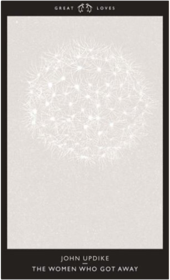 Gertrude and Claudius 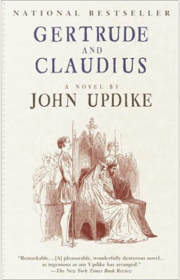 Gertrude and Claudius also amounts to a running theological argument, in which men constantly impale themselves on metaphysical principle while the adulterous queen is willing "to accept the world at face value, as a miracle daily renewed." (That would explain Gertrude's snap diagnosis of her neurotic son: "Too much German philosophy.") A superlative satellite to Shakespeare's creation, Updike's novel is likely to retain a kind of subordinate rank, even within his own capacious body of work. Still, it's packed with enough post-Elizabethan insight about men and women, parents and children, to suggest that the play's not the thing—not always, anyway. —James Marcus The Complete Henry Bech 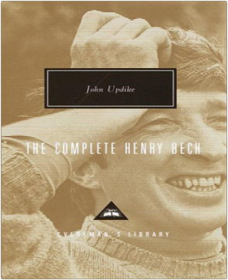 From his birth in 1923 to his belated paternity and public apotheosis as a spry septuagenarian in 1999, Bech plugs away, globetrotting in the company of foreign dignitaries one day and schlepping in tattered tweeds on the college lecture circuit the next. By turns cynical and naïve, wry and avuncular, and always amorous, he is Updike’s most endearing confection—a Lothario, a curmudgeon, and a winsome literary icon all in one. A perfect forum for Updike's limber prose, The Complete Henry Bech is an arch portrait of the literary life in America from an incomparable American writer. |


Delicious Library
Collection Total:
3,640 Items
3,640 Items
Last Updated:
Nov 2, 2025
Nov 2, 2025
 Made with Delicious Library
Made with Delicious Library